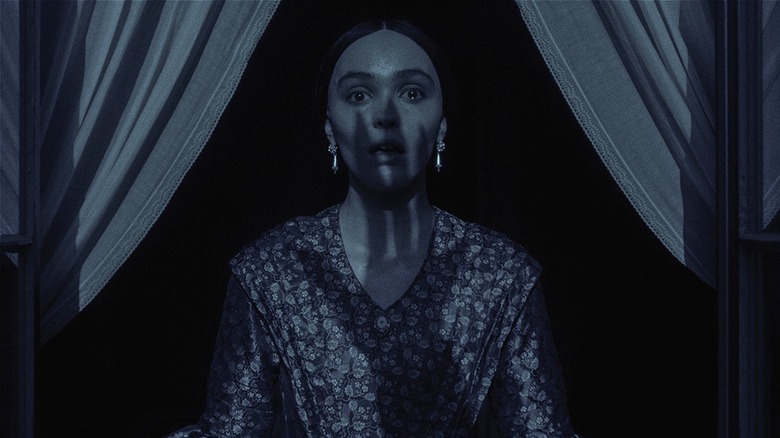What Does Nosferatu Actually Mean?
It's likely that most people who have been able to see and enjoy (or maybe not enjoy) the recent horror film "Nosferatu" don't know the origin of its title. While some may recognize that the film is a remake of a 1922 German expressionist picture called "Nosferatu: Symphony of Horror," it's highly unlikely that they could confidently explain how that film's screenwriter, Henrik Galeen, came up with its name. While the exact origin of the word "Nosferatu" is unconfirmed, it has been posited that it is derived from the archaic Romanian word "nesuferitu," which means "the insufferable one" or "the offensive one."
It's believed that Bram Stoker, the author of the 1897 horror novel "Dracula," first saw the term "nosferatu" used by a British writer named Emily Gerard in her studies of Transylvanian folklore. He decided to apply the term to Dracula and his like, using it in his work as a sort of synonym for the word "vampire." Albin Grau, producer and designer on the 1922 "Nosferatu" film, said that he got the idea for the film and its title from superstitious Serbians while he was serving in World War I, but the film's story was just too similar to that of Bram Stoker's original novel not to cause controversy.
Nosferatu is an unofficial adaptation of Dracula
The 1922 film "Nosferatu: Symphony of Horror" is actually considered an unofficial screen adaptation of "Dracula." The term "nosferatu" is used in "Dracula," the first use of the word in a mainstream piece of fiction, as a synonym for vampire. The name of "Nosferatu: Symphony of Horror" is already evocative of "Dracula," but the story itself is also essentially a direct copy of Bram Stoker's novel with a few name changes. Instead of Dracula, the story's main antagonist is called Count Orlok; instead of a vampire hunter named Van Helsing, the story's protagonists are aided by an occultist named Dr. Albin Eberhart von Franz, etc.
The creators of the film introduced only one original element of the story, as "Nosferatu: Symphony of Horror" is actually the origin of the part of vampire lore that says that they will die in direct sunlight. Otherwise, the 1922 silent film was billed on fliers in Germany as "freely adapted" from "Dracula," which gave Bram Stoker's widow, Florence Stoker, more than enough evidence to sue for copyright infringement on her late husband's novel.
While Florence was initially motivated by her financial need — she was not making enough money on "Dracula" royalties to sustain herself following her husband's death — it became clear a bit after the film's release that it wouldn't be a financial windfall for anyone. That said, Florence still wanted to protect her husband's legacy, and her actions eventually led to a German judge's decision to have every copy of the film found and burned. Luckily (though not for the Stokers), a few copies slipped through the cracks, and the film has survived to this day.

